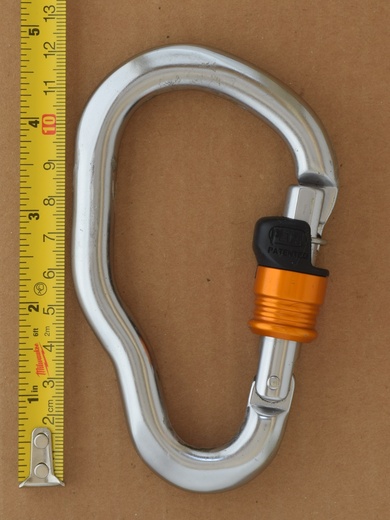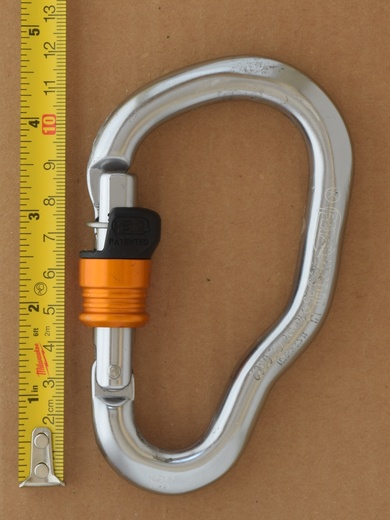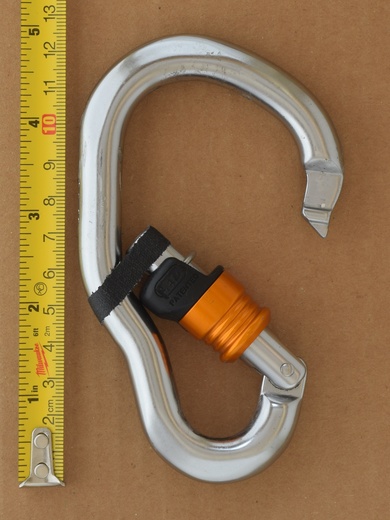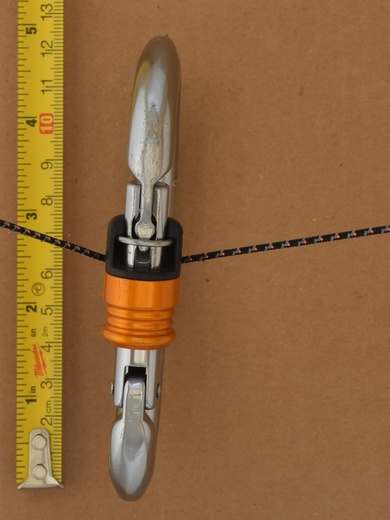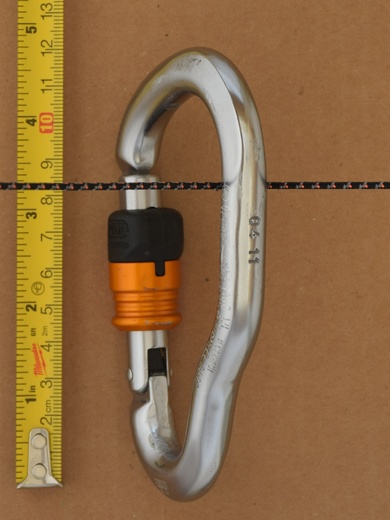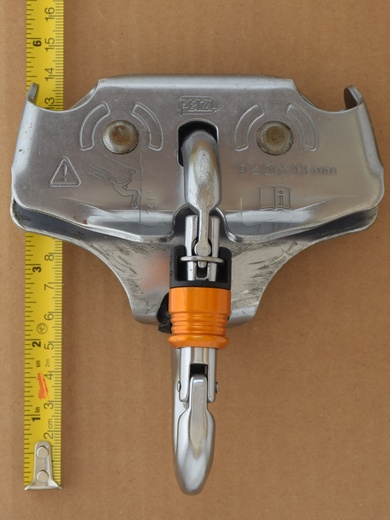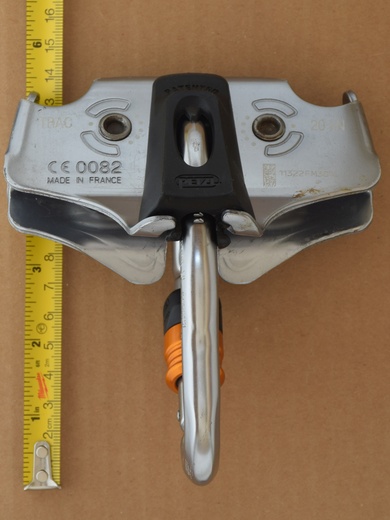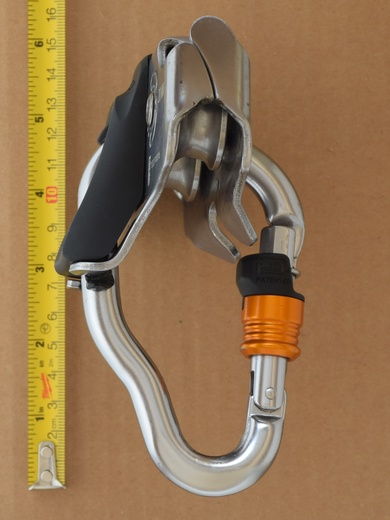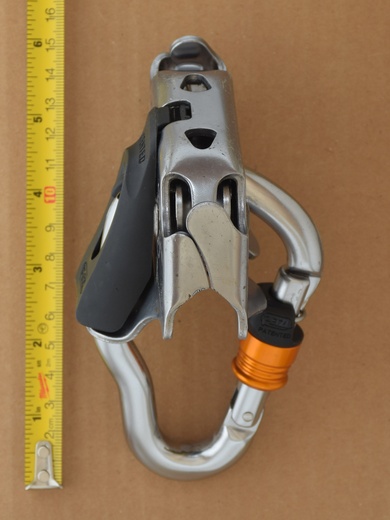| Name: | Petzl Vertigo Wire-Lock v1 |
| Category: | slide lock |
| Locking Type: | full-auto |
| Locks: | single |
| Unlock Style: | slide |
| Shape: | asymmetric D |
| Material: | aluminum |
| Profile: | round |
| Nose: | keylock |
| Nose Guard: | none |
| Rivets: | domed |
| Gate Shield: | relieved |
| Weight: | 98 g |
| Dimensions: | Length: 124.5 mm Width: 74.66 mm Depth (basket end): 11.26 mm Gate Opening: 25 mm |
| Strength Ratings: |  25 kN | 25 kN |  10 kN | 10 kN |  8 kN 8 kN |
| Other Markings: | Laser: Ⓚ PETZL VERTICGO WL 11 162 VA6861 (ratings) CE 0082 11 162 VA6861 Stamped: 04 11 Molded: PETZL PATENTED | PETZL PATENTED |
| Batch Marking Location: | spine-exterior |
| Collection Criteria: | ★ Mechanically Interesting ★ Demonstrates a Discipline |
| Summary: | slidelock for via ferrata and zipline trolley |
| Description & Commentary: | A huge oversized carabiner designed for the repetitive one handed anchor passing common when climbing Via Ferrata (Klettersteig) or in use with a trolley on a zipline canopy tour or adventure park. The large gate opening slips easily over thick cable and ladder rungs. A wire held by a sleeve crosses the nose of the carabiner, blocking the gate from opening. To unlock, the climber slides the sleeve and wire downward. Interestingly, the wire will pivot independent of the sleeve. If the gate is open but the sleeve is in the upper (locked) position, the gate will still close without moving the sleeve - the wire merely pivots out of the way. The locking sleeve of the Vertigo v1 only requires about 2.3mm of travel to unlock, with 5mm of movement maximum. This is very convenient for the frequent clipping/unclipping in via ferrata, but does not provide as much security as other carabiner locking mechanisms. This is shorter travel than Vertigo v2, and the v1 locking sleeve is more likely to catch, increasing the chances of accidental opening. By their very nature as connectors, carabiners are part of a larger fall protection/restraint (or work positioning) system, and this carabiner was designed to be used in pairs on a lanyard system. Each carabiner provides redundancy, and as such does not require the same level of security as when using a single point of attachment - common in tree climbing (and why you can find the extremely secure DMM Durolock in that discipline). Petzl claims the WireLock mechanism "optimizes the number of opening and closing cycles of the gate and limits maintenance." I can see how this might be the case, given the simple locking mechanism and the fact that the locking wire re-engages independent of the sleeve. It probably tolerates mud and debris fairly well, but I do not have field experience with this carabiner outside of some simple familiarization climbs. Youtube channel HowNOT2 pull tested the Petzl Vertigo as part of a chain of carabiner, and noticed that the Vertigo unlocked when another carabiner failed, rapidly releasing the stored energy of the pull. When the other carabiner failed, the inertia of the locking sleeve caused the sleeve to remain stationary, while the Vertigo rapidly accelerated upwards (relative to itself), unlocking the gate. See a short gif of this failure, a close-up slo-mo or view the timestamped full video (when video is paused, navigate frame by frame using the , and . keys). This particular example was part of an integrated transport trolley called the Petzl Trac, designed for use on rope or cable (wire rope). The advantage of an integrated pulley is that the trolley can be quickly attached and detached from the support line without risk of dropping, other designs present a risk of dropping or require another tether. This sort of gated trolley has become more and more common with the rise in popularity of adventure parks and canopy tours. Some ropes courses with stand alone ziplines are now using multiple gated trolleys to increase throughput. Petzl Trac has sheaves spaced 51mm apart - a design which is fairly unstable especially when used with a brake block system on the zipline. |
